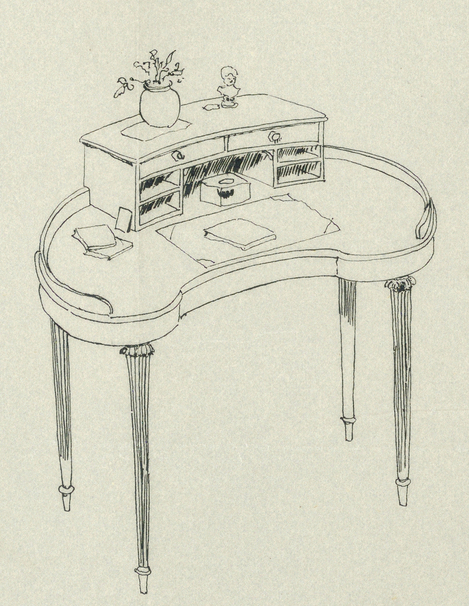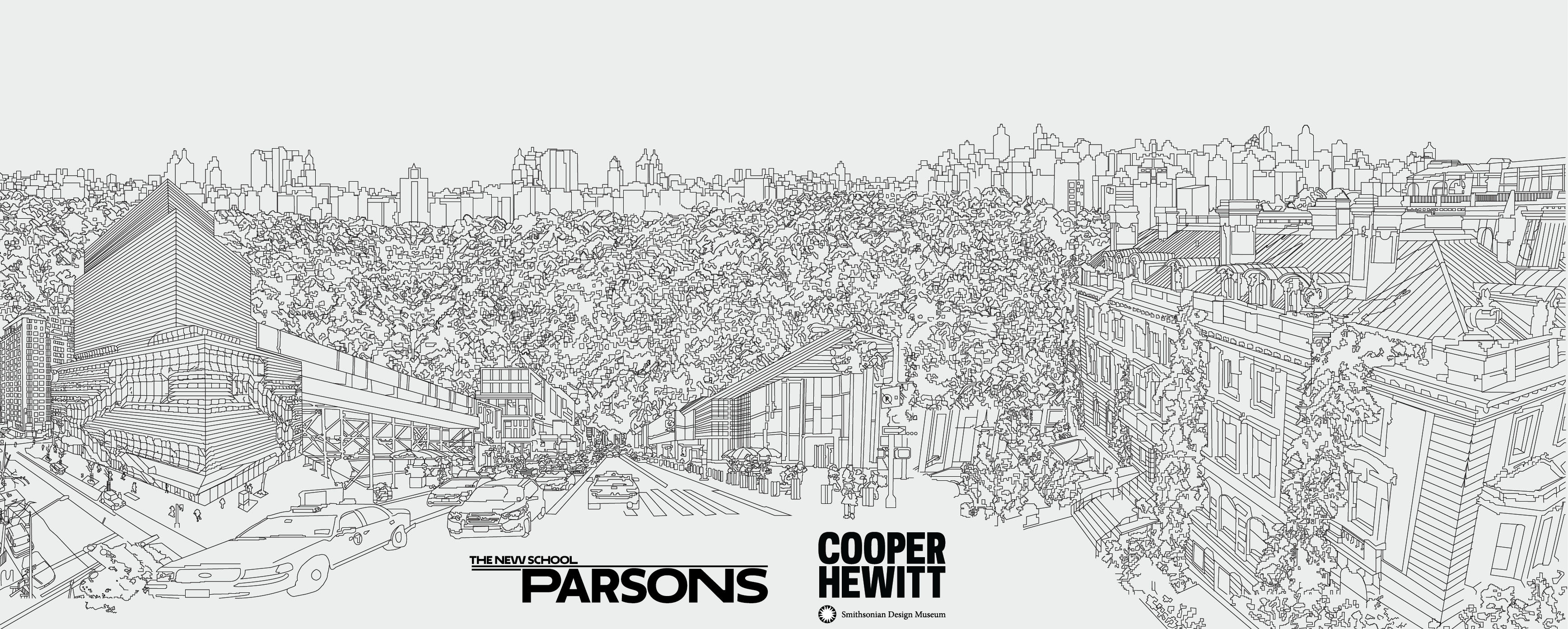History of Design and Curatorial Studies MA Program and Objective, the Journal
This unique MA program in the heart of New York City is offered jointly by Parsons School of Design and Cooper Hewitt, Smithsonian Design Museum The program engages students in an object-focused, practice-based approach to the study of curatorial practice, design, decorative arts, and material culture dating from the Renaissance to the present. Housed for more than 30 years at Cooper Hewitt—the only museum in the United States devoted exclusively to historical and contemporary design—the program enables students to work directly with the museum’s collections, curators, conservators, and educators.
Graduates of the program work in some of the world’s most prestigious nonprofit, commercial, cultural, and academic institutions. Alumni hold positions in auction houses, museums, galleries, and historic houses; enter fields such as criticism and journalism, consulting and e-commerce, and teaching; and pursue advanced study in doctoral or fellowship programs. They serve in a range of capacities related to interpreting and promoting art and design and educating the public about them.
Objective, the Journal of History of Design and Curatorial Studies, presents essays, reviews, interviews, and object analyses written by current students and alumni of the MA program. It is published either in print or digitally every two years. We encourage readers to explore the previous issues archived on our website.
The People
Claire Quong & Elizabeth Watkins
Co-Editors in Chief & Managing Editors
Dr. Marilyn Cohen
Faculty Advisor
Elizabeth Watkins
Chief Copy Editor
Erik Livingston, Annabelle Oates, Claire Quong
Copy Editors
Chloe Buergenthal, Alanna Campbell, Elizabeth Sanders, Claire Quong, Elizabeth Watkins
Editorial Board
Asli Kuvvet
Chief Designer
Chloe Friedenberg
Assistant Designer
Claire Quong
Digital Editor
Afiya Lewis
Website Developer
Letter from the Editors
How do you think about design? How are you engaging with design history?
In 2015, the inaugural issue of Objective asked these same questions, and we posed them once again to our community for the sixth issue. This journal demonstrates the breadth and talent of our program and our fundamental interest in things.
While reflecting on our community, we found ourselves returning to the original objective. Material culture, the bits and pieces that make up design history, might seem oddly specific, but, really, they are lenses to be used, primary sources with incredible value for every historian and curious individual. Whether housed in a collection or a humble household object, these things are physical manifestations of humanity. Careful study of objects can reveal secrets and surprises, reinforce what we already know, or shift our perspectives entirely. We, therefore, aimed to capture the current contexts of our program from historical and curatorial perspectives through submissions written by our peers – past and present – and relevant to the field of design history and curatorial studies now. We aim to challenge earlier racist, sexist, and imperialistic roots imbricated within our discipline by presenting or amplifying historically underrepresented voices and embracing diversity, equity, inclusion, and belonging.
With this issue, we have introduced an “Object” section to return to our roots of object-based research and focus on different cultures and modes of making. Guided by observation, theory, and lived experience, contributors surveyed a range of topics, objects, and time periods. Our writers explore narratives often not told in design history. This sixth issue of Objective highlights our writers’ diversity of research from Mamluk textiles, Aztec featherwork, and Indigenous Mexican needlework to the semiotic use of material culture in a Queer film, the hot comb and Black women’s hair, and a memory-laden afghan.
Our objective is to socially, culturally, and aesthetically contextualize the spectrum of objects throughout history from the mundane to the magnificent and the enduring to the ephemeral. We hope the articles in Objective encourage you, our readers and peers, to expand the boundaries of your scholastic dedication to contemporary and historical design by engaging with new topics of conversation, inspiration, and contemplation.
Thank you,
Claire Quong and Elizabeth Watkins
Co-Editors in Chief, Objective
Acknowledgements
We acknowledge that our learning at Parsons School of Design, The New School, takes place on ancestral Lenape homelands, and we recognize the longstanding significance of these lands for Lenape nations past and present. We also acknowledge that the field of art and design history does not encompass all voices, cultures, and histories. We believe that historical awareness of Indigenous exclusion is critical, and we are committed to doing the necessary work to overcome the erasure of Indigenous knowledge in our own educational institution and in the digital landscape we now also inhabit.
We would like to thank everyone who contributed their time, knowledge, and expertise to the History of Design and Curatorial Studies MA program (HDCS). We especially thank Dr. David Brody, Director of HDCS MA program, and Maria Nicanor, Director of Cooper Hewitt, Smithsonian Design Museum. We are also grateful to Matilda McQuaid, Acting Director of Curatorial at Cooper Hewitt, and to all the curators at Cooper Hewitt for their constant input into our program. Additionally, we want to thank Ashley Tickle (Director of Communications & Marketing) and Laurie Bohlk (Associate Director of Communications & Marketing) from Cooper Hewitt for their careful attention to the content of this issue of Objective. An additional thank you to Danielle Bowers and Luke Davis, who administer the History of Design and Curatorial Studies MA program, for all their assistance.
We are immensely thankful for our incredible faculty and professors. Our professors provide us with invaluable knowledge, experience, encouragement, and guidance. We are truly grateful for your unwavering commitment to our academic growth and scholarly pursuits.
Afiya Lewis of Parsons School of Design continues to make our online presence possible, and ongoing gratitude goes to Charlotte von Hardenburgh, editor-in-chief of the fifth issue of Objective, designer Arpie Gennetian and her assistant Ivana Maldonado for connecting Objective to the World Wide Web.
We also thank our editorial, copyediting, and graphics teams for their contributions to shaping this sixth edition of Objective. Our immense gratitude goes to our faculty advisor, Dr. Marilyn Cohen, for her unwavering dedication and guidance as we navigated the development of this issue after an unprecedented part-time faculty strike.
Finally, of course, we are incredibly appreciative of our contributors—our classmates and alumni—for sharing their wonderful wide-ranging interests and writing. Objective would not exist without your fascinating and diverse scholarly pursuits.
Image Credits
Drawing, Design for Kidney-Shaped Writing Table with Open Compartments, 1900–05; Designed by A.N. Davenport Co. ; pen and black ink on thin cream tracing paper; 16.5 x 16.5 cm (6 1/2 x 6 1/2 in. ); Gift of The Lake St. Louis Historical Society; 2000-69-244. Courtesy of Cooper Hewitt, Smithsonian Design Museum.
Objective footer illustration, 2021. Design by Ivana Maldonado.



